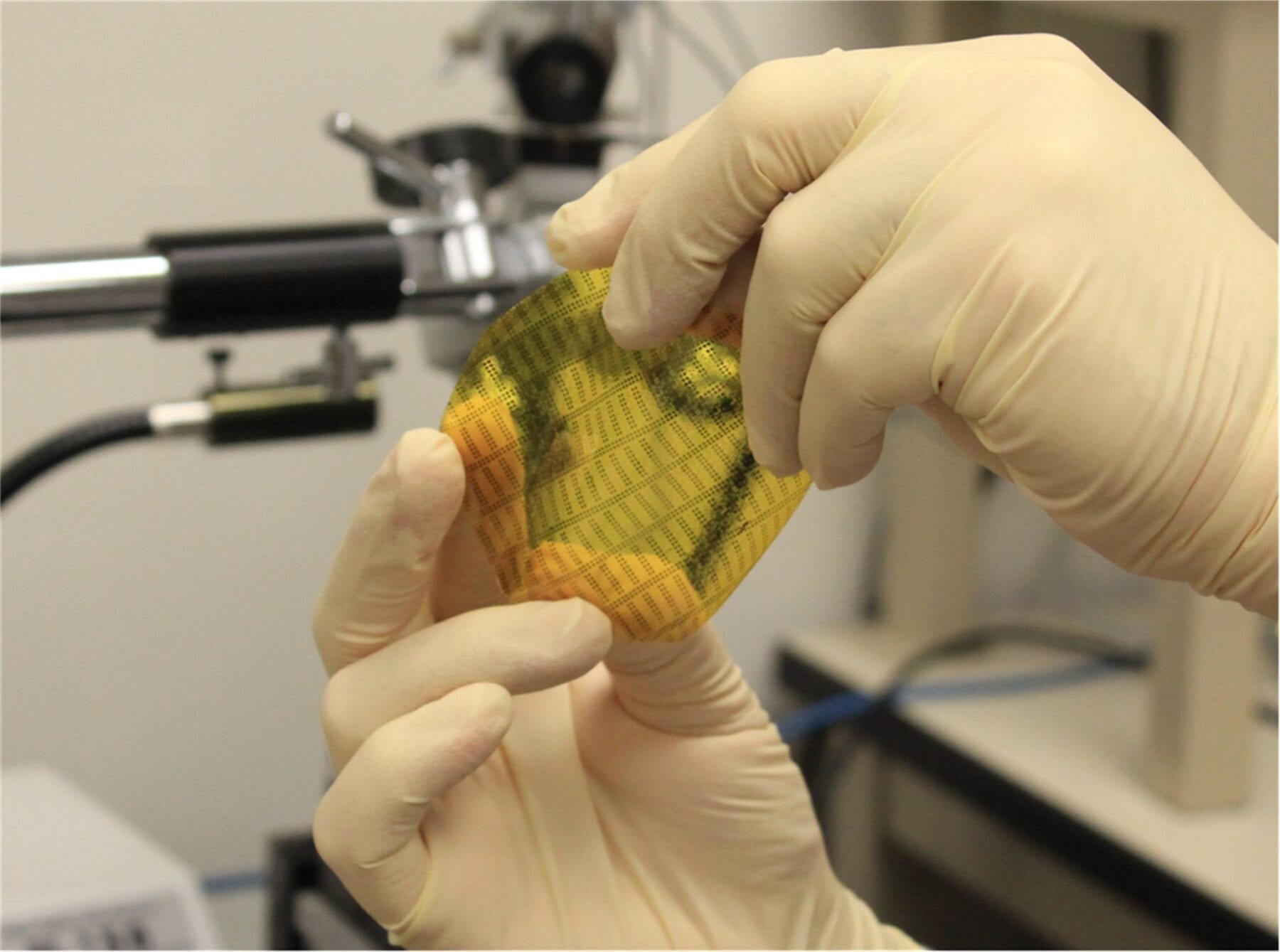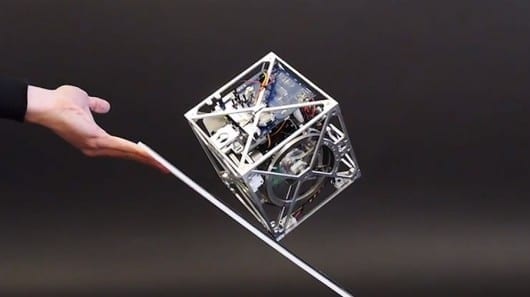
The University of Texas at Arlington has patented a smart skin, created by a UTA researcher, that will give robots more sensitive tactile feeling than humans.
“The idea is to have robots work better alongside people,” said Zeynep Çelik-Butler, a UTA electrical engineering professor. “The smart skin is actually made up of millions of flexible nanowire sensors that take in so much more information than people’s skin. As the sensors brush against a surface, the robot collects all the information those sensors send back.”
Çelik-Butler said the sensors, which are flexible and made of zinc oxide nanorods, are self-powered and do not need any external voltage for operation. Each is about 0.2 microns in diameter, while a human hair is about 40 to 50 microns.
In addition, the developed sensors were fully packaged in a chemical and moisture resistant polyimide that greatly enhances usability in harsh environments. The result is a thin, flexible, self-powered tactile sensing layer, suitable as a robotic or prosthetic skin.
The smart skin technology allows the robots to sense temperature changes and surface variations, which would allow a person alongside the robot to be safer or react accordingly.
Other possible future applications include adhering the smart skin to prosthetics to equip them with some feeling, applying the technology to other medical devices, weaving the skin into the uniform of a combat soldier so that any toxic chemicals could be detected or fingerprint identification.
“These sensors are highly sensitive and if they were brushed over a partial fingerprint, the technology could help identify who that person is,” Çelik-Butler said. “Imagine people being able to ascertain a person’s identity with this hairy robot, as my students call it.”
Teri Schultz, director of technology management in the UTA Office of Research, said the technology shows promise in a number of commercial sectors.
“Robots are the here and now,” Schultz said. “We could see this technology develop with the next generation of robots to allow them to be more productive in helping people.”
Learn more: UTA patent gives robots ultra-sensitive skin
The Latest on: Smart skin
[google_news title=”” keyword=”smart skin” num_posts=”10″ blurb_length=”0″ show_thumb=”left”]
via Google News
The Latest on: Smart skin
- Serena Williams’ Secret to Brighter Skin Is This Niacinamide Dark Spot Serumon April 30, 2024 at 6:34 am
Serena Williams has always had an ethereal glow about her. It could just be her being a world-famous tennis star, or from living in sunny Florida, or also from spending time with her beautiful family.
- Chase The Sun, Not The Damage: Smart Skin Care Choices For Summeron April 30, 2024 at 4:03 am
As the days grow longer and the sun shines brighter, many of us eagerly embrace the warmth of summer. However, the nee ...
- Skin Care Newson April 29, 2024 at 5:00 pm
And facial sheet masks soaked in skin care ingredients provide an easy way to do this. However, ... Smart Skin Bacteria Are Able to Secrete and Produce Molecules to Treat Acne Jan. 9, 2024 — An ...
- Protect your baby's delicate skin: Look for natural-phenoxyethanol free productson April 29, 2024 at 5:43 am
Babies have sensitive skin, so it's important to use products that won't irritate or hurt them. Use things that are gentle and made without harsh chemicals or strong smells. let's look at some ...
- Bizarre PRE-erection ‘smart’ condoms men put on 2 hours before sex to avoid interrupting intimacyon April 29, 2024 at 4:42 am
MEN can now buy condoms they can roll on up to two hours before getting erect. Companies are selling packs of three ‘pre-erection’ Johnny’s for as little as £5 a pop. Colombian ...
- AI feature on flagship phone removes clothes leaving the illusion of bare skinon April 26, 2024 at 8:19 pm
Huawei's object removal feature on the Pura 70 Ultra, based on AI, accidentally removes clothing from the subject of a photo.
- What is skin milk lotion? Dermatologists explain its skin-softening benefitson April 25, 2024 at 1:50 pm
Skin milk lotions are trending, so we asked dermatologists about the creamy, lightweight skin care products that boost hydration.
- Climate-smart routines: Geoskincare takes centre stage in beauty trends for 2024on April 25, 2024 at 3:24 am
Geoskincare is one of the main trends our teams identified as shapers of the cosmetic industry in 2024. In today’s changing world, there is no doubt Geoskincare is bound to be adopted as a holistic ...
- Prairie Fare: Are you taking care of your skin?on April 24, 2024 at 11:00 pm
Actually, the older you get, the less you care about insensitive comments. Self-tanning lotions usually contain DHA (dihydroxyacetone), which is nontoxic for use on our skin. Self-tanning lotions are ...
via Bing News











